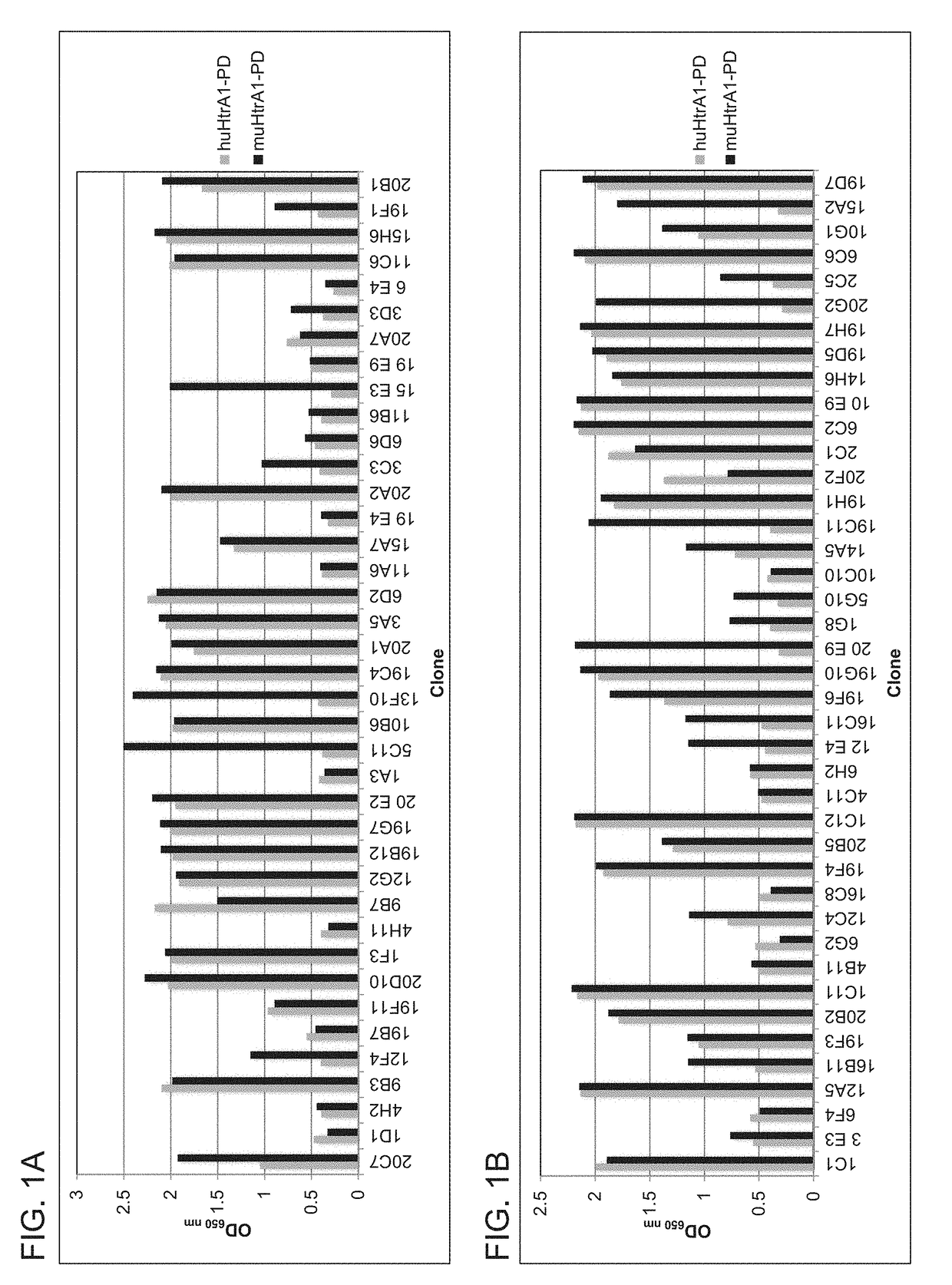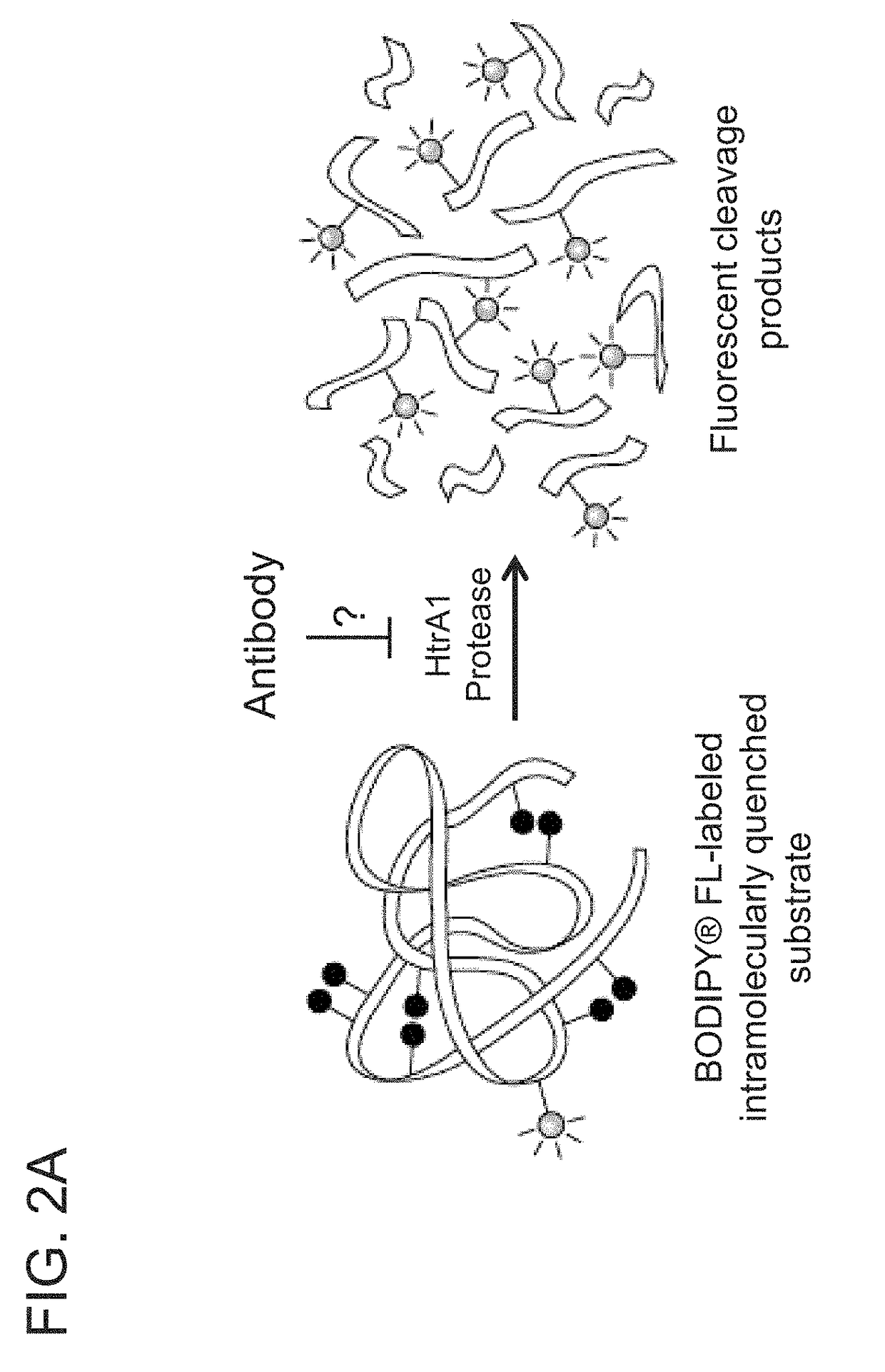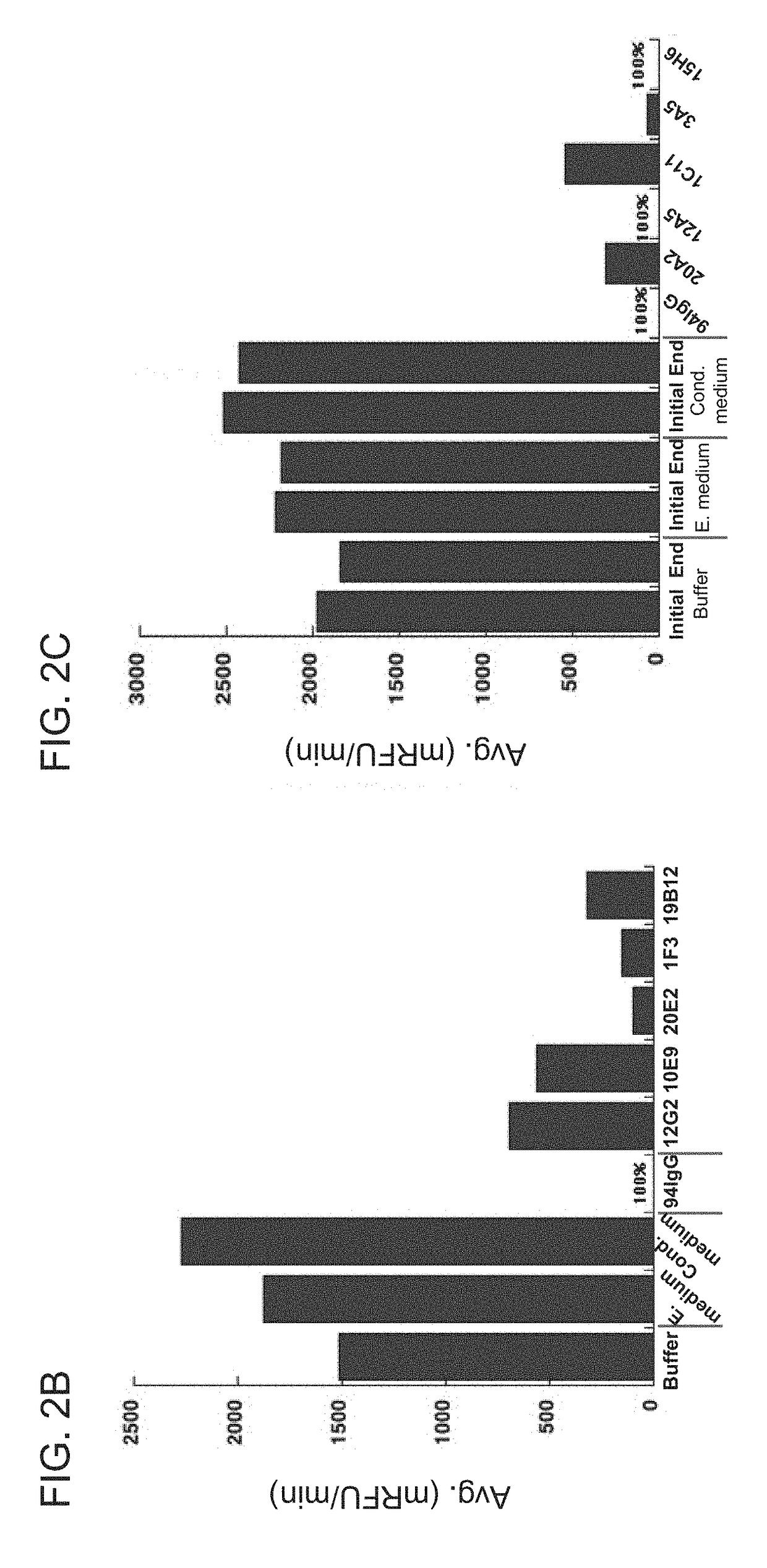ANTI-HtrA1 ANTIBODIES AND METHODS OF USE THEREOF
a technology of anti-htra1 antibodies and antibodies, which is applied in the field of anti-htra1 antibodies, can solve the problems of irreversible vision loss, significant retinal damage, and vision loss, and achieve the effect of high binding affinity and high potency
- Summary
- Abstract
- Description
- Claims
- Application Information
AI Technical Summary
Benefits of technology
Problems solved by technology
Method used
Image
Examples
example 1
n of Anti-HtrA1 Antibodies Using Hybridoma Approaches
[0419]A. Media and Antibodies
[0420]CLONACELL™-HY Medium B (Cat#03802), Medium C (Cat#03803), Medium D (Cat#03804) and Medium E (Cat#03805) were from StemCell Technologies. CYTOFUSION® Medium C (Cat# LCM-C) used for electrofusion was from Cyto Pulse Sciences. Allophycocyanin (APC)-labeled goat F(ab′)2 anti-mouse Ig was from SouthernBiotech (Cat#1012-11), horseradish peroxidase (HRP)-conjugated goat anti-mouse IgG Fc antibody was from Sigma. TMB (3,3′,5,5′-tetramethylbenzidine) One Component HRP Microwell Substrate (Cat# TMBW-1000-01) and TMB Stop Reagent (Cat# BSTP-1000-01) were from BioFx Laboratories.
[0421]B. In Vivo Immunization of Mice
[0422]Five HtrA1-knockout mice (HtrA1.noneo.BALB.ko.C1-3) were immunized with purified His-tagged recombinant murine HtrA1 protease domain (referred to herein as muHtrA1-PD-His, SEQ ID NO: 153; see Example 2 of WO 2013 / 055998) suspended in monophosphoryl lipid A / trehalose dicorynomycolate adjuvant...
example 2
ion of Anti-HtrA1 Hybridoma Antibodies 15H6 and 19B12
[0474]A. Humanization of Anti-HtrA1 Antibody 15H6
[0475]The light chain variable region (VL) and heavy chain variable region (VH) sequences of murine 15H6 antibody (also referred to as m15H6) were aligned with human antibody consensus sequences, and human consensus light chain kappa I (huK1) and human consensus heavy chain subgroup I (huVH1) were identified as the closest human frameworks (FIGS. 8A and 8B).
[0476]The hypervariable regions (HVRs) of the m15H6 light chain and heavy chain were grafted into huκI and huVH1 consensus acceptor frameworks, respectively, by Kunkel mutagenesis (see, e.g., Kunkel et al., Methods Enzymol. 154: 367-382, 1987) using separate oligonucleotides for each hypervariable region to generate antibody clone h15H6.v1 (FIGS. 8A and 8B). In this process, positions 24-34 in HVR-L1, 50-56 in HVR-L2 and 89-97 in HVR-L3 of the m15H6 VL were grafted to the huκI consensus acceptor, and positions 26-35 in HVR-H1, 49...
example 3
Maturation of Anti-HtrA1 Antibody Clone h15H6.v2
[0492]A. h 15H6. v2 Affinity Maturation NNK Library Construction and Panning
[0493]To further improve the affinity of anti-HtrA1 antibody clone h15H6.v2, phage libraries were constructed from variant h15H6.v2 in Fab-amber format for monovalent Fab phage display with either light chain HVR residues (i.e., HVR-L1, HVR-L2, and HVR-L3) or heavy chain HVR residues (i.e., HVR-H1, HVR-H2, and HVR-H3) residues randomized using the NNK degenerate codon that encodes for all 20 amino acids with 32 codons (see, e.g., Brenner et al., Proc. Natl, Acad. Sci. USA 89(12): 5381-5383, 1992). Libraries were designed to allow one NNK mutation in each of the three light chain or heavy chain HVRs. The resultant library DNA was electroporated into E. coli XL1 cells, yielding approximately 109 transformants. In some instances, soft randomization libraries and NNK epistasis were employed as described in PCT / US2015 / 055672. Phage libraries were incubated with 750 ...
PUM
| Property | Measurement | Unit |
|---|---|---|
| dissociation constant | aaaaa | aaaaa |
| dissociation constant | aaaaa | aaaaa |
| dissociation constant | aaaaa | aaaaa |
Abstract
Description
Claims
Application Information
 Login to View More
Login to View More - R&D
- Intellectual Property
- Life Sciences
- Materials
- Tech Scout
- Unparalleled Data Quality
- Higher Quality Content
- 60% Fewer Hallucinations
Browse by: Latest US Patents, China's latest patents, Technical Efficacy Thesaurus, Application Domain, Technology Topic, Popular Technical Reports.
© 2025 PatSnap. All rights reserved.Legal|Privacy policy|Modern Slavery Act Transparency Statement|Sitemap|About US| Contact US: help@patsnap.com



